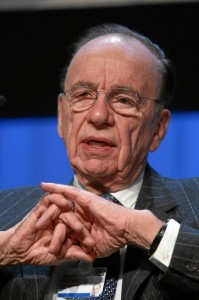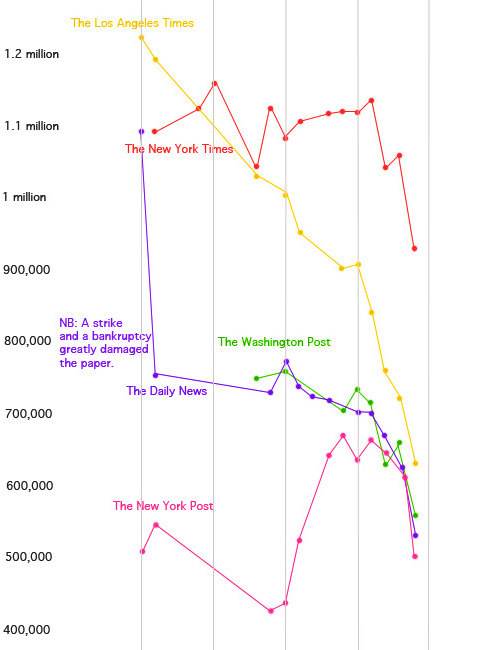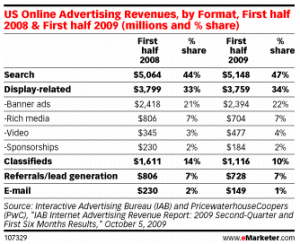It’s now generally accepted wisdom that, at some point, the population of people who are willing to pay for printed newspapers will decline to the point that print will no longer be a viable medium. Alan Mutter hauls out the spreadsheets and applies his trademark statistical eye to the data in a two-part entry that establishes a likely endpoint for daily print frequency.
Mutter points out that the core newspaper audience of people over 50 years of age today represents only 30% of the population. He projects that half of them will be gone by 2025 and the other half by 2040. Mutter enlists government lifespan projections in his estimates as well as survey data about the percentage of young people who read newspapers. He believes printed newspaper consumption will fall by at least 27% over the next 15 years and 50% in the 15 years after that.
“The projections clearly indicate the publishers pursuing a business-as-usual approach may find their current operations… to be unsustainably unprofitable within five years,” the Newsosaur concludes. Some variables in the calculations could change, though; advertising rates could suddenly start rising. If you believe that, we’d recommend a 12-step program.
Mutter presents three scenarios and only the most optimistic forecast has newspapers printing profitably on a daily schedule five years from now. The more likely outlook is that most papers have to cut back from daily frequency in order to remain viable, as has been done in Detroit. We believe that print newspapers will exist for many years, but we doubt that the major metro daily model has more than about 10 years left in it. Mutters calculations tend to support our opinion.
Miscellany
Charles Apple points out that surprisingly few newspapers featured the massive earthquake in Haiti on their front pages today. Perhaps that’s because deadlines have been moved up and design staffs cut in the name of cost savings? Apple points to one paper that featured a graphic headline that almost made light of the tragedy. Check out his blog and see what you think. We tend to agree with Apple.
Apple also notes that Jim Hopkins, the publisher of the popular Gannett Blog, has quietly returned to the field and is publishing as busily as ever. Hopkins shut down the blog last fall with considerable fanfare; in fact, some people thought his countdown to closure was overplayed. Just as we were becoming accustomed to a post-Hopkins existence, we learn that Hopkins is feeling more energetic and has a renewed commitment to keep the tone of Gannett Blog more civil. Here’s a brief interview on Jilted Journalists. In the months leading up to last summer shutdown, tensions between the blog and Gannett had reached a fever pitch.
What the blog gods giveth they also taketh away, and McClatchy Watch is the most recent casualty. This online watchdog, which was cast in the image of Gannett Blog, went dormant two days before Christmas. We can’t say we’re going to miss it. While McClatchy Watch was once a valuable source of intelligence about the company it follows, in the past year it’s taken on a conservative political agenda that has been distracting to the point of irritation. If the anonymous author who publishes it ever decides to come back, we hope he/she will focus on the topic at hand.
The Los Angeles Times, which maybe the most troubled title in the Tribune Company portfolio, is addressing its online competitors by moving its deadlines earlier. LA Observed says the Times‘s effort to save money by shuttering its Orange County presses and taking on production of The Wall Street Journal has forced the paper to move its news deadlines up by as much as five hours. This means that in a world in which competitors publish information in seconds over Twitter, the Times will now have a 6 PM deadline for a newspaper that hits readers’ doorsteps more than 12 hours later. Please don’t follow this example.
No matter what you may think of Google — and a lot of newspaper publishers think it’s the great Satan — you have to hand it to the search engine giant for announcing that it will pull out of the China market rather than continue to censor its search results. Google’s complicity with the Chinese government’s repressive policies has been a black eye for some time, but there are good financial reasons why it’s been reluctant to stand up for its principles: Its stock price would get hammered. In light of that fact, the decision to draw a line in the sand deserves praise. Jeff Jarvis, who recently published a book about Google, puts it in perspective. He expects Google to suffer Wall Street’s wrath but pays tribute to the company for putting its principles ahead of its stock price. Lots of discussion on that post.
Speaking of Google, did you know that it has severed its relationship with the Associated Press? That’s right: Google News doesn’t have any AP stories dated after December 23, 2009. Google isn’t saying very much, but publishers might want to keep an eye on this divorce to see if it has any lessons for their own deadly embrace with the search engine company. CNN Money points out that the AP doesn’t derive much revenue from advertising, so the loss of the Google business isn’t significant. Still, AP may be in a good position to provide its members with data on what the Google breakup has meant for its traffic.
The latest on Tribune Co.’s plans to exit bankruptcy are that the event is likely to happen in the first half of this year. Tribune chairman Sam Zell made that forecast in an interview with CNBC this week. Zell has been unspecific lately on when the troubled media company, which has been in bankruptcy for a year, would reemerge. The news of a pending reappearance should be a boost for Tribune employees, since the company has avoided massive asset sales in order to bring its books into line. Instead, it has relied on layoffs and surgical cost cutting.
A new Harris survey says that 77% of American adults would not be willing to pay to read a newspaper’s content online and the 23% who would pay won’t pay much. If you extrapolate the results, they indicate that less than 1.5% of online adults would pay more than $10 per month for a newspaper. This can’t be good news to the smattering of papers that had recently erected paywalls.
John McIntyre takes issue with a Washington Post headline that a lot of people apparently think is brilliant. We agree with McIntyre that it is more at cryptic than clever. We also agree that the example of a brilliant headline that he proposes — “Freedom’s Just Another Bird With Nothing Left To Lose” — is a thing of beauty. Reald the blog for background on how that one came about. Lots of people are weighing in on this discussion. If McIntyre isn’t in your RSS reader, he should be.















